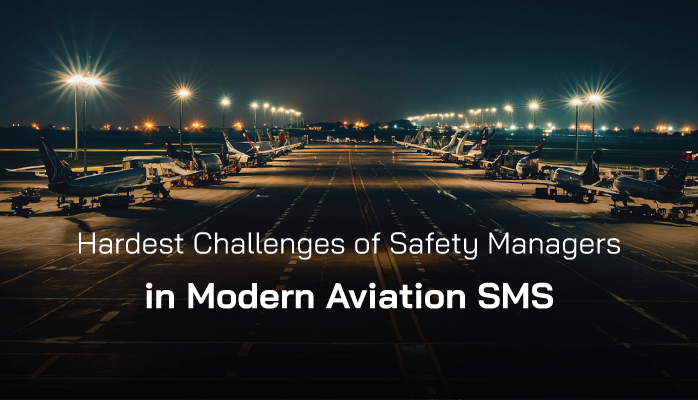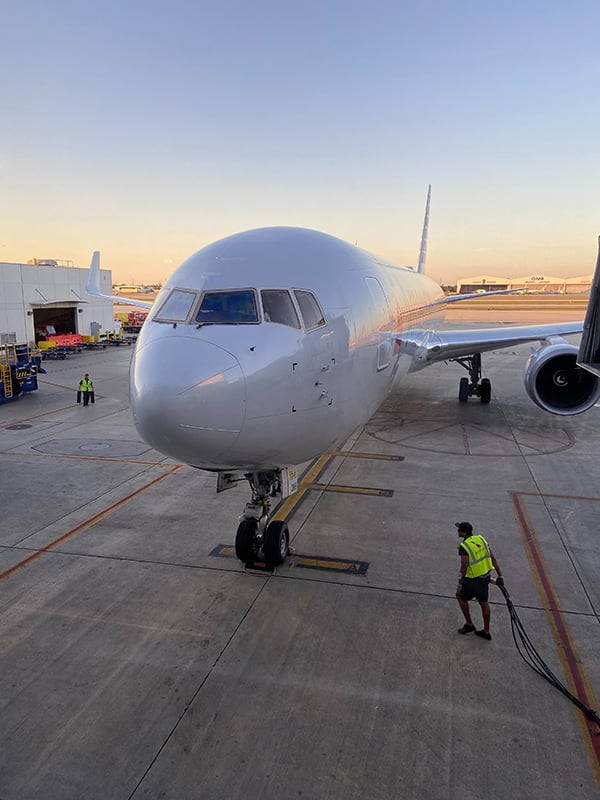Perpetual Improvement in Aviation SMS

I was recently talking to a friend about the less spectacular points of his job as an aviation safety manager.
We talked about this and that – the various hurdles every aviation safety manager has to jump over every day.
- Management who is unwilling to hand over resources for better SMS tools
- Apathetic employees or high turnover
- Resistance to change
- Implementing a new program in a chaotic environment
The list goes on, but the point is that every workplace has barriers that a safety manager will have to throw his weight against every day. In my friend’s case, he had dealt with quite a few in his tenure.
But one thing over the years has snuck up on him.
Related Aviation Safety Manager Articles
- What Is an Aviation Safety Manager in a SMS
- 5 Types of Aviation Safety Managers
- How to Be a Better Aviation Safety Manager
The Pursuit of Continuous Improvement
From my friend's perspective, the constant challenge of continuous improvement proved particularly challenging. What this means is that aviation safety management systems (SMS) are marathons and not sprints. Just because one has a fully implemented aviation SMS does not mean that the safety manager can sit around like the Maytag repairman.
The Nature of Aviation SMS

SMS is not designed to be a “fixed book.” On the surface, it can certainly seem like one for several reasons:
- Highly systematic
- Built upon the framework of the 4 pillars
- Built on policies and procedures
- Driven from top down
- Requires continued management involvement
- Constant review of risk controls
Much about an aviation SMS would appear to be fairly solid, but at its root an aviation SMS is a structure of processes, always changing and adapting. One very well might measure the health of an aviation SMS by how well it adapts.
The greatest sign of an immature SMS implementation is one that is static or fails to change. It implies resistance to change that cannot be overcome, failure to identify new hazards, or failure to improve existing safety policies.
No End in Sight
In aviation SMS, there are few if any considerable benchmarks where a safety manager can say, “All right, great, I’ve made it.” What we are really talking about here is
- A sense of achievement
- A sense of completion
- A sense of restarting
Now, this is not to say that safety managers don’t feel accomplished, but only to say that their sense of achievement differs from most other, project-based, professions.
It is much harder for a safety manager to find aspects of the job that have a sense of completion from which to derive accomplishment. After all, even with successful aviation SMS implementations, there are always things to improve, and more changes. Even after a successful SMS implementation reaches phase four, the wheel keeps on turning.
It’s no surprise then that aviation safety managers sometimes feel like the man from the Myth of Sisyphus, who has to roll the rock up the hill but can never reach the top. Having a sense of achievement is a vital component of one’s satisfaction with anything.
Related Aviation SMS Implementation Articles
- Why Should We Implement Aviation SMS?
- Is Your Aviation SMS Implementation a Farce? - With Self Assessments
- SMS First Steps - How to Create an SMS Implementation Plan
Building Pressure
Having to constantly improve and strengthen the process of safety creates a lot of pressure and is a heavy burden to carry. Over time it can be taxing.
Studies show that achievement is a primary factor in motivation. As an SMS implementation becomes healthier, more robust, and more sophisticated, so does a safety manager need to be more creative in finding means of improvement, and also maintaining the quality of the current safety culture.
Once again we are talking about improving and maintaining, which are processes. And in the current case, the maintaining as improving becomes heavier as time goes on – unrelentingly so.
In professions that are more project-oriented, one can have a sense of release and accomplishment after going through a process, finishing the project, and starting anew on a different project. That sense of completion is objective, with hard start/finish lines.
Aviation safety managers don’t quite have that luxury.
Subjective Achievements

Safety managers have in large part the responsibility of setting their own achievements. This could be many things – a few examples:
- Hitting safety reporting-number goals
- Consistently hitting SMS safety performance goals on time
- Training one person at a time with the SMS
- Fewer accidents
- Sincere adoption of the risk management processes by other department heads
What’s difficult about this is that the safety manager may be setting his/her own goals, in his/her own time frame, which can feel at times unwholesome subjective or random. Not to mention that it takes a great deal of motivation to set and reach your own goals. In other organizations particularly the larger airlines and airports, safety goals and objectives are set by management, with the support of safety committees.
Related Aviation SMS Safety Goals and Objectives Articles
- What Are Safety Objectives in Aviation SMS - With Examples
- How to Create Safety Objectives in Aviation SMS With Examples
- How to Shape Your Corporate Vision With Aviation Safety Goals and Objectives
How Safety Managers Practice Perpetual Improvement
Incrementally achieving perpetual improvement by creating benchmarks, achievements, and areas of starting afresh is essential for safety managers to fight burnout. In addition to several other things, burnout is a primary reason why aviation safety managers quit.
I have seen several things that good aviation managers do to stay motivated:
- Take things one day at a time
- Create complex (even if informally) goals and objectives for the aviation SMS
- Set time frame intervals for themselves, such as monthly or quarterly, to compare how they did – i.e. break their program into time-based “projects”
Finding concrete, measurable, timely goals is an extremely realistic way to fight the sense of needing to perpetually improve. Moreover, such goals allow a safety manager to look back through time and see measurable progress in any number of areas.
Last updated January 2025.







